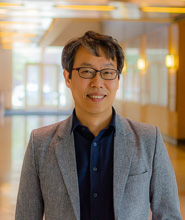
Lee, Sang Bok
Director, MD Nanocenter
Chemical and Biomolecular Engineering
Maryland Energy Innovation Institute
EDUCATION
Ph.D., Seoul National University, 1997
Recently, supercapacitors have received growing interest as an complementary energy-storage device and a small scale power system for mobile electronics with the rapid advance of high-performance electronic devices.
Conductive polymers and transition metal oxides are promising materials for the redox supercapacitor because they can be readily converted between oxidized and reduced states by the switch of the applied potential. This conversion process involves charging/discharging (or doping/dedoping) of counter-ions to keep electro-neutrality in the materials, which is a fundamental character for a capacitor. Because the mass transfer of counter ions is necessary, however, this charging/discharging is too slow to provide required high power. This results in an inefficient utilization of the electroactive material, that is, loss of usable energy.
The hollow nanotubular structures can provide a solution for fast charge/discharge with their intrinsic structural characteristics. The thin nature of the nanotube wall enables the rapid redox process of conductive polymer by providing short diffusion distance to the counter-ions in the nanotubes (as well as in bulk solution). Furthermore, long nanotubes can provide high mass-loading for enough energy density.
We investigate the supercapacitive electrochemical properties of the nanotube arrays with various materials such as conductive polymer (e.g. PEDOT and polypyrole) and metal oxide (e.g. MnO2 and RuO2). The micron-long, thin-walled nanotubular structures will allow the full usage of deposited materials even at fast charge/discharge rate and enable us to accomplish a supercapacitor with high power density and high energy density. The nanostructures are synthesized by electrochemical method rather than chemical one to provide higher conductivity.